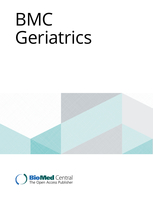The association of cardio-metabolic risk factors and history of falling in men with osteosarcopenia: a cross-sectional analysis of Bushehr Elderly Health (BEH) program
Authors
Noushin Fahimfar,1 Shakiba Yousefi,1 Sima Noorali,1 Safoora Gharibzadeh,2 Mahnaz Sanjari,1 Kazem Khalagi,1 Ahmad Mehri,3 Gita Shafiee,4 Ramin Heshmat,4 Iraj Nabipour,5 Azam Amini,6 Amirhossein Darabi,7 Gholamreza Heidari,8 Bagher Larijani,9 and Afshin Ostovar 1
1
Affiliations
Abstract
Background: Osteosarcopenia, defined as sarcopenia plus osteopenia/osteoporosis, may increase the risk of fractures and affects morbidity and mortality in the older population. Falling is also common in the elderly and increases the risk of fractures and mortality. We examined the association of cardio-metabolic risk factors with a history of falling in osteosarcopenic men.
Methods: We used the baseline data of the Bushehr Elderly Health (BEH) program. Osteosarcopenia was defined as having both sarcopenia (reduced skeletal muscle mass plus low physical performance and/or low muscle strength) and osteopenia/osteoporosis (T-score ≤ – 1.0). Falling was defined as a self-reported history of an unintentional down on the ground during the previous year before the study. We used logistic regression analysis to estimate the adjusted odds ratio (AOR) with a 95% Confidence Interval (CI) to quantify the associations.
Results: All elderly men diagnosed with osteosarcopenia (n = 341), with a mean age of 73.3(±7.4) years, were included. Almost 50(14.7%) participants reported falling. Age showed a positive association with falling (AOR: 1.09, 95%CI: 1.04-1.14). An increase of 10 mmHg in systolic blood pressure(SBP), reduces the odds of falling by 26%(AOR:0.74, 95%CI:0.62-0.89), while a positive association was detected for fasting plasma glucose (FPG), as 10 mg/dl increase in the FPG, raises the chance of falling by 14%(AOR = 1.14, 95%CI:1.06,1.23). Hypertriglyceridemia was inversely associated with falling (AOR = 0.33, 95% CI: 0.12, 0.89).
Conclusions: Falling is a major public health problem in rapidly aging countries, especially in individuals with a higher risk of fragility fractures. Older age-raised fasting plasma glucose and low SBP are associated with falling in osteosarcopenic patients. Considering the higher risk of fracture in osteosarcopenic men, comprehensive strategies are needed to prevent fall-related injuries in this high-risk population.
Keywords: Cardio-metabolic; Elderly; Falling; Iran; Osteosarcopenia; Risk factor.

